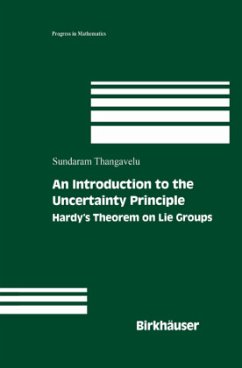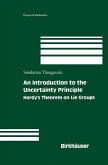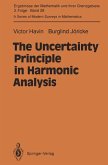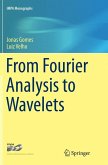In 1932 Norbert Wiener gave a series of lectures on Fourier analysis at the Univer sity of Cambridge. One result of Wiener's visit to Cambridge was his well-known text The Fourier Integral and Certain of its Applications; another was a paper by G. H. Hardy in the 1933 Journalofthe London Mathematical Society. As Hardy says in the introduction to this paper, This note originates from a remark of Prof. N. Wiener, to the effect that "a f and g [= j] cannot both be very small". ... The theo pair of transforms rems which follow give the most precise interpretation possible ofWiener's remark. Hardy's own statement of his results, lightly paraphrased, is as follows, in which f is an integrable function on the real line and f is its Fourier transform: x 2 m If f and j are both 0 (Ix1e- /2) for large x and some m, then each is a finite linear combination ofHermite functions. In particular, if f and j are x2 x 2 2 2 both O(e- / ), then f = j = Ae- / , where A is a constant; and if one x 2 2 is0(e- / ), then both are null.
"This nicely written book by Thangavelu is concerned with extensions of Hardy's theorem to settings that arise from noncommutative harmonic analysis.... Each chapter contains several applications to the heat equation in various settings and ends with an extensive presentation of related topics, current research, detailed references to the literature, and lists of open problems. This makes the book an invaluable resource for graduate students and researchers in harmonic analysis and applied mathematics." -SIAM Review "...Each chapter ends with useful notes and open problems. Everything is written in sufficient detail to benefit specialized interested readers..." -MATHEMATICAL REVIEWS "The authoer discusses inthe present book the original theorem of Hardy and some of its generaliztions and its connections to noncommunitave analysis, harmonic analysis and special functions. First Hardy's theorem for the Euclidian Fourier transform is treated, and a theorem of Beurling and Hömander Subsequently Hardy's theorem is dicussed for the Fourier transfom on the Heisenberg group. finally the author discusses generaliztions of Hardy's theorem involving the Helgason Fourier transform for rank one symmetric spaces and for H-type groups. This unique book will be of great value for readers interested in this branch of analysis." ---Monatshefte für Mathematik








